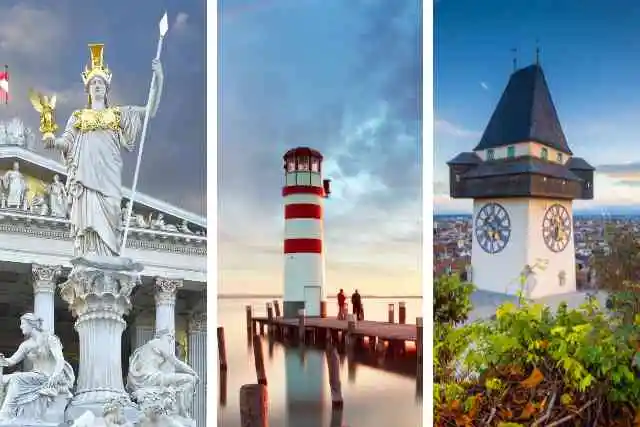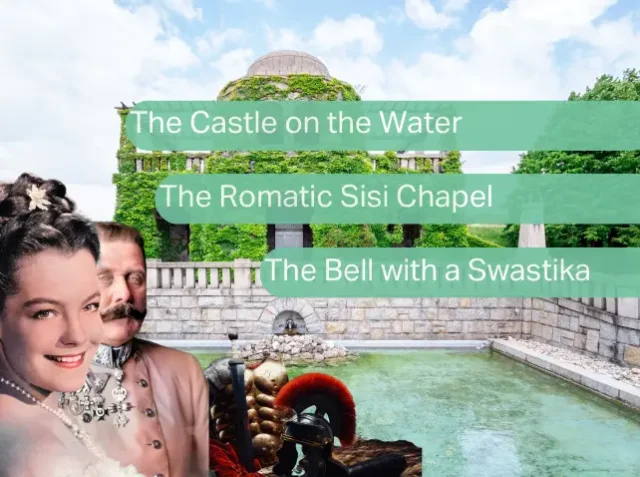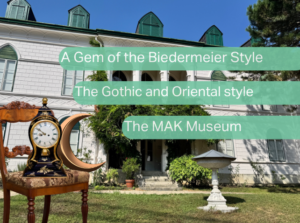This stunning Neo-Gothic church is not just an architectural masterpiece but a monument filled with intriguing stories and secrets. Dive into these fascinating facts about Votivkirche, and discover why it's a must-see landmark on your next visit to Vienna!

Book
Austria by Public Transport
Discover Austria like never before with “Austria by Public Transport.” This book is your ultimate guide to exploring the beauty of Austria easily and affordably. Get your copy today and start your adventure!
Votivkirche, also known as the Votive Church, is sometimes called the Cathedral on Ringstraße. It’s not surprising that some tourists visiting Vienna mistake it for St. Stephen’s Cathedral. Many believe the church resembles the most beautiful French cathedrals, and they are right. The building stands as one of the most important examples of Neo-Gothic architecture in the world. Built in the style of a French cathedral, it adds a unique character to Vienna’s skyline.
Franz Joseph’s Brother
The church exists thanks to the initiative of Franz Joseph I’s (the husband of Sisi) brother – Maximilian I. After an assassination attempt on the emperor (Franz Joseph I – the husband of Sisi), his brother decided to start a public fundraising campaign. He wanted to honor the fact that Franz Joseph survived. This led to the creation of this impressive sacred building, a votive offering of gratitude.
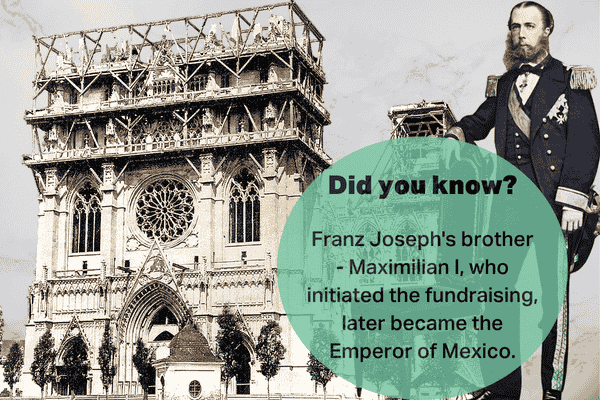
Heinrich von Ferstel
An architectural competition took place for the church’s construction. Nearly 80 architects participated, but Heinrich von Ferstel won. He later became one of Austria’s most important architects. The church was consecrated in 1879. With its towers reaching 99 meters, Votivkirche stands out in the city’s skyline. Only St. Stephen’s Cathedral is taller, highlighting its significance.
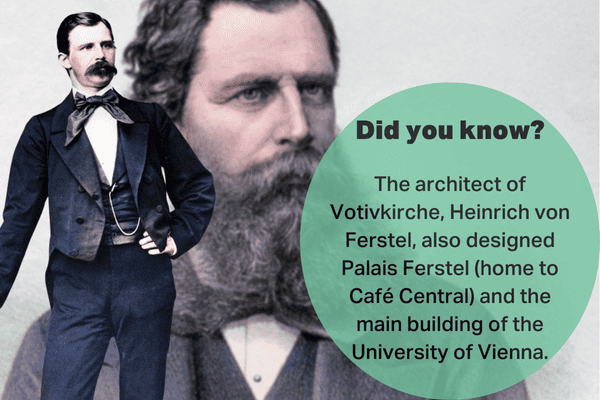
Support
Each post on our site takes 10 to 20 hours to prepare, and we’re a small, independent project. We really need your support to keep things going! Your help means everything to us. Please consider supporting us, so we can keep bringing you awesome content.
Thanks for being awesome!
Failed Assassination
Attack on the Emperor
On February 18, 1853, one of Austria’s most famous failed assassination attempts occurred. Young Emperor Franz Joseph I was walking on the Kärntnertor bastion in Vienna. A Hungarian tailor named János Libényi attacked him. The assassin tried to stab the emperor with a knife. The emperor’s adjutant, Count O’Donnell, partially thwarted the attack. Despite this, Franz Joseph suffered a wound near the back of his head.
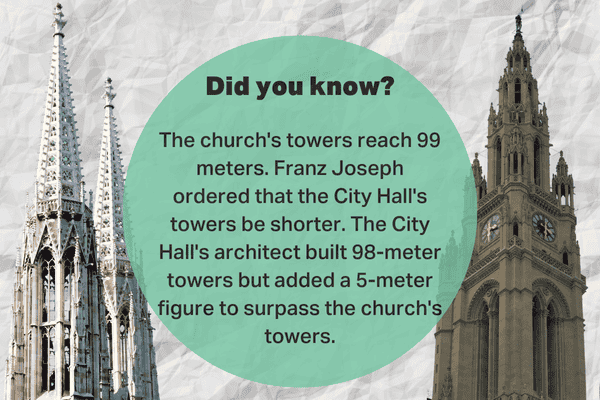
Public Reaction
Eventually, O’Donnell and a butcher named Joseph Ettenreich overpowered Libényi. They caught him before he could do more harm. Libényi was sentenced to death and hanged a few days later. After the assassination attempt, the emperor gained public support. His brother, Archduke Ferdinand Maximilian, initiated a fundraising campaign to build a church. It was a votive offering in gratitude for the emperor’s survival.
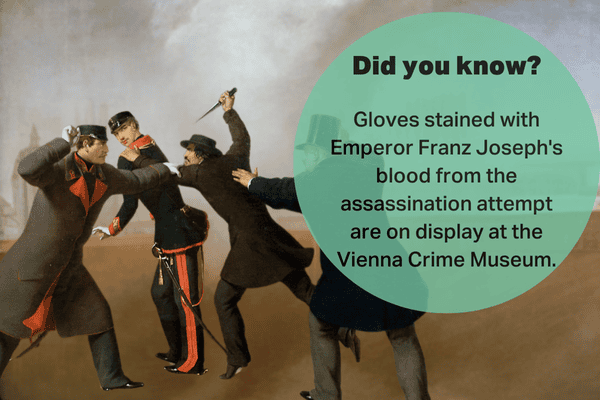
Honoring the Heroes
As a result of this action, the Votivkirche in Vienna was built and dedicated in 1879. The heroes of that day received honors. Count O’Donnell received decorations, and Joseph Ettenreich, the butcher who helped overpower the assassin, was ennobled and received a noble title. This underscores the importance of their actions.

During the Wars
Initially, planners intended the church as a burial place for famous representatives of the Danube monarchy. However, they did not realize this plan. Votivkirche suffered during World War I. The military melted down parts of the organs and bells for war purposes.
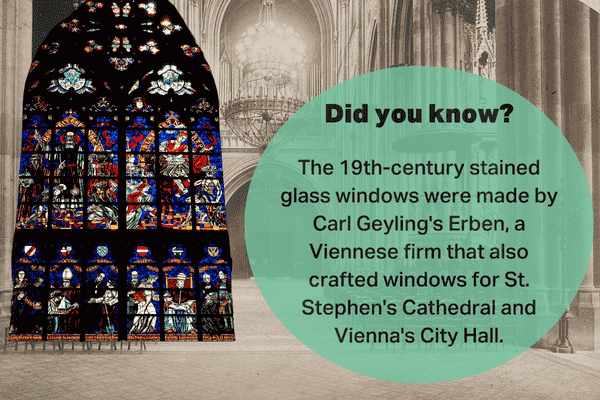
During World War II, bombings destroyed some windows and the roof. Despite these damages, the church survived, retaining its majesty.

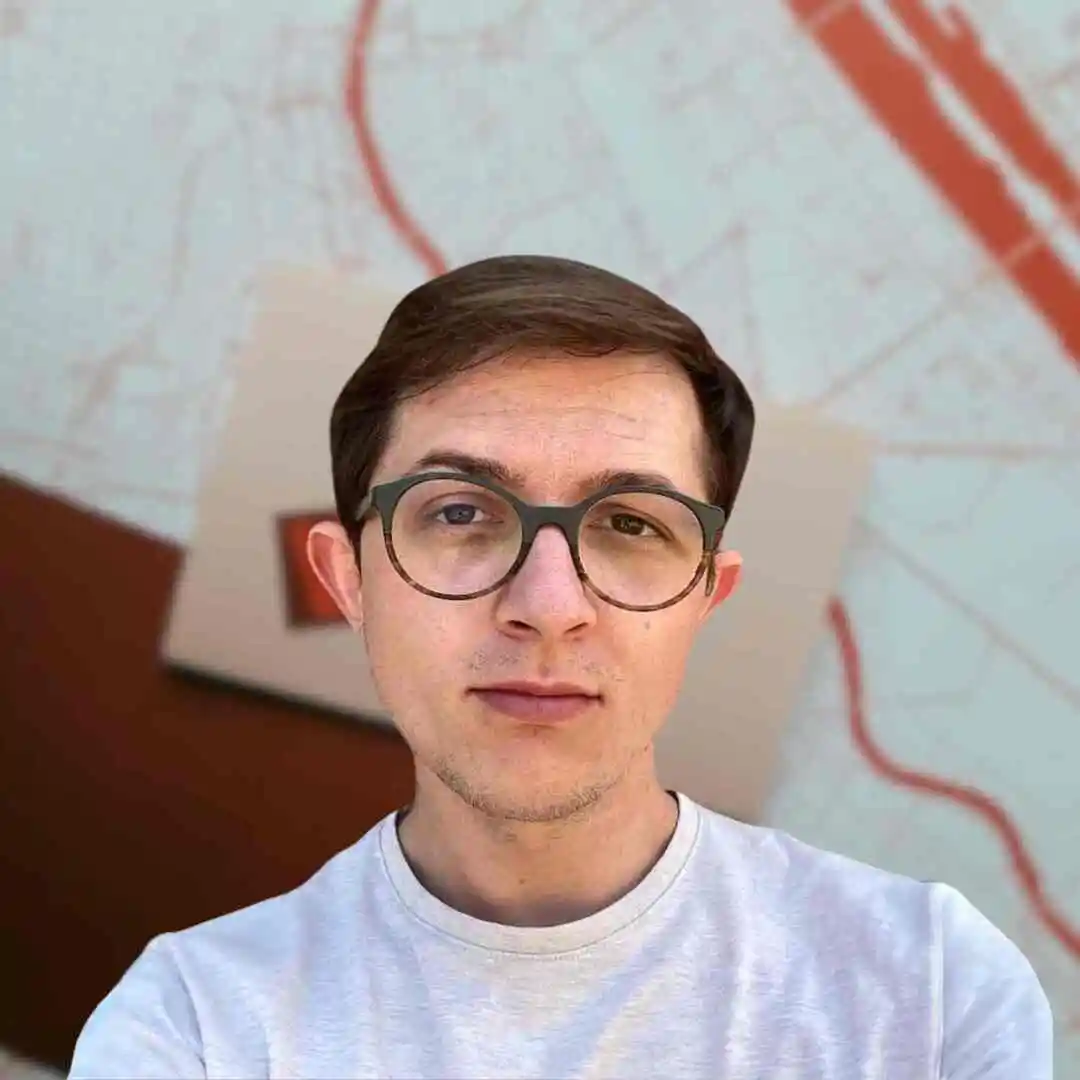
Kordian
Hey, it’s me, Kordian! I spend like 10 to 20 hours on each post just for you. This website is my main source of income. If you enjoy using it regularly, I’d totally appreciate your financial support. Your help means a lot and keeps the content coming. Thanks a bunch!
The Famous Stained Glass
The Jägerstätter Window
The Jägerstätter Window is located in the chapel and draws attention with its three-part composition. In the highest section, the tablets of Moses are visible. Below, Franz Jägerstätter tears apart a flag with a swastika. At the bottom, his wife prays at his grave. This creates a clear Christian context. The window stands out with its strong, direct symbolism of resistance against Nazism.

The Mauthausen Window
The Mauthausen Window depicts a scene from the Mauthausen concentration camp. In the foreground are the “Stairs of Death,” with prisoners supporting each other. This symbolizes brotherhood in suffering. At the top of the stairs, Jesus carries the cross. This emphasizes the window’s spiritual dimension and adds depth.
Architect of Neo-Gothic
Heinrich von Ferstel, born on July 7, 1828, in Vienna, was one of Austria’s leading architects. He greatly influenced the development of the Historicism style in Austria. He studied architecture at the Academy of Fine Arts in Vienna and quickly showed exceptional talent. His career gained momentum in 1855 when he won the competition for the Votivkirche project. This victory brought him widespread fame and opened many doors.

Works
Ferstel left a significant mark on Vienna’s architecture. Besides Votivkirche, he designed numerous buildings, including the well-known Palais Ferstel, home to the popular Café Central and University of Vienna main building. As a professor at the Vienna University of Technology, he taught until his death.
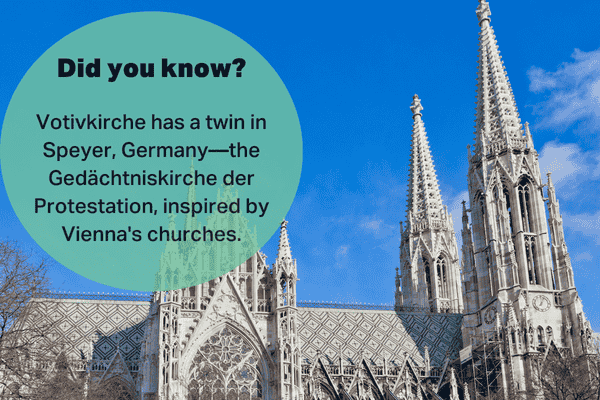
Characteristics of Neo-Gothic
Neo-Gothic, also known as Gothic Revival, is a 19th-century architectural and artistic style. It referred back to medieval Gothic, drawing inspiration from it. Architects aimed to revive old forms in a new context, embracing ideals of spirituality and freedom from medieval cities. Neo-Gothic buildings like churches, town halls, and universities feature slender towers, soaring windows, and rich decorations. This style dominated from 1830 to 1900 and was especially popular in Europe and North America.


Subscribe
Explore Vienna like a local and discover nearby treasures.
Join our mailing list!
Evaluation of Emperor
Franz Joseph I
Emperor Franz Joseph I ruled Austria and Austria-Hungary for 68 years. He remains a figure of ambivalent historical assessment. On one hand, he symbolized stability in the monarchy, fulfilling duties in turbulent times like the Revolutions of 1848, the war with Prussia, and World War I. On the other hand, his conservatism and reluctance to pursue deeper reforms and modernization contributed to the monarchy’s downfall. Although he tried to balance various nations in his empire, critics targeted his neo-absolutism after 1848 and lack of decisive modernization policies. This influenced the collapse of Austria-Hungary after his death.
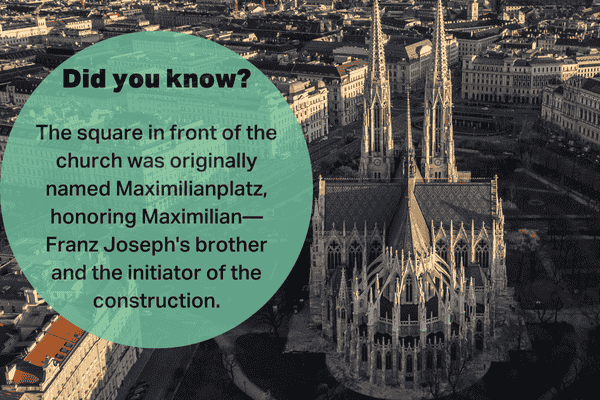
More Interesting Facts
- Oldest Monument on Ringstraße: Votivkirche isn’t directly on Ringstraße because the project didn’t exist when construction began. Later, it became part of Ringstraße and is considered its oldest monument.
- Funded by 300,000 Donors: Built with contributions from 300,000 people, the church published the names of donors daily in the “Wiener Zeitung.”
- Square Renamed After WWII: During the Nazi era (1938-1945), the square was called Hermann Göring Square. After the war, it was renamed Roosevelt Square, its current name.
Join Our Vibrant Community
Are you passionate about discovering the hidden gems of Vienna and its surroundings? Follow us on social media and become part of our enthusiastic community!
Why Follow Us?
- Exclusive Content: Each post is a labor of love, taking between 10-30 hours to create. We share breathtaking photos, captivating stories, and invaluable tips.
- Stay Updated: Never miss out on exciting events, new attractions, and must-visit spots in and around Vienna.
- Support Independent Projects: We are an independent project, and your follows help us cover the costs of running this page. Your support is crucial!
Your Support Matters!
Every follow, like, and share directly supports our work. It helps us continue bringing you the best content and ensures we can keep this site running. By following us, you’re not just staying informed – you’re helping us grow and thrive.
Don’t miss out! Click the links above and start following us today. We can’t wait to connect with you!

